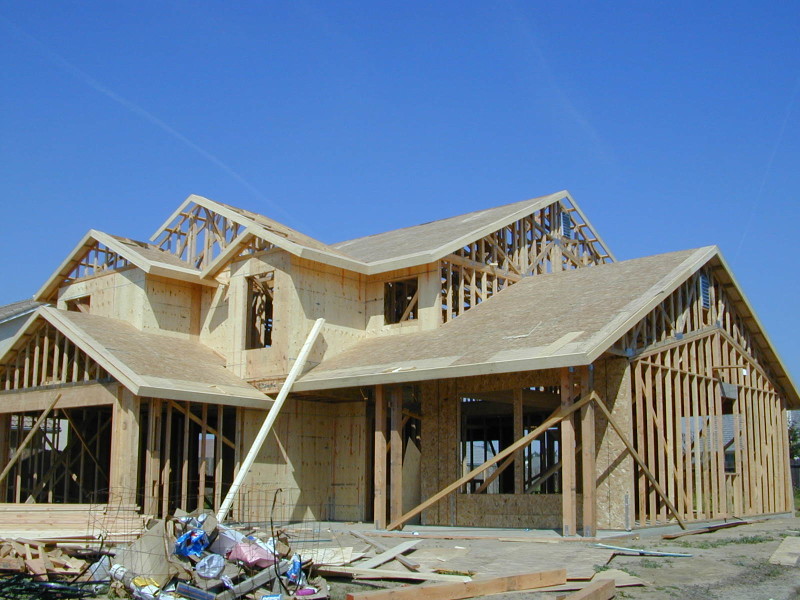What Buyers Should Know About New Construction
Buying a new construction home is different than a resale home. Here is what buyers should know about new construction.
Builder prices are often influenced by:
- Location
- Cost of the land
- Size of the home
- Cost of the building materials
- Labor costs
- Real estate market conditions
- Builder impact fees
- The Real Estate Agent’s Role.
Purchasing new construction is usually more complicated and intimidating than buying a resale home. As a local expert and having experience with newly constructed homes, the Real Estate Agent is instrumental in helping you navigate the entire process. Builder contracts and the building process is different from what most real estate agents deal with on a daily basis, so having new construction experience is important.
Buyers ask me frequently if they can use a real estate agent when they are purchasing new construction. The answer is definitely yes.
Most often, the builder model homes are staffed by agents who work directly for and represent the builder. A buyer also needs to have a real estate agent that represents them and looks after their best interests.
Most builders require a real estate agent accompany and register the buyer on their first visit to the builder’s model home or community. Make sure your buyers don’t just “stop by” the new home community without you. If they do, they could lose the opportunity to have their own representation.
- Best Time to Buy.
A lot of the national builders are publicly traded companies. They need to meet sales goals and answer to the shareholders of that company. For that reason, toward the end of a quarter, builders tend to be more aggressive with their incentives in order to meet these sales goals.
The December holiday season is another great time to buy. Most of the country is out shopping and traveling to see family. Very few people shop for homes this time of the year. For that reason, ’tis the season to find some great incentives to purchase a new home. However, the new construction market in the Chicagoland area is up this spring and deals can be found now.
- List Prices of Builders.
It shouldn’t be a surprise that builders don’t like to reduce their prices. If they do, it sets a precedence for future home sales. Builders are more likely to pay for closing costs or offer design center incentives than to drop their prices.
Builders are not like regular sellers. They are not emotionally attached to the property. They make decisions based on what is best for their bottom line. There is something known as the time value of money, which means that money available at the now is worth more than the same amount of money later.
What does that mean practically? It means that every day a builder has a home that is sitting for sale on the market — they are losing money. Look for builder inventory homes that have been on the market for 45 days or more. These are the homes in which a buyer might be able to get a good deal.
Side note: Some new home buyers think that if they do not use an agent for their purchase, the builder will reduce the price of the home by the amount of the commission. For the most part, this cannot be further from the reality. Builders do not want to reduce their prices because it sets the comparison price for future home sales in that neighborhood. Builders instead add the commissions paid to a buyer’s agent into the marketing budgets of the homes. If a buyer goes to a new home builder without a real estate agent, either the builder’s agent or the builder will pocket that money.
- Get Everything in Writing.
Getting everything in writing seems obvious, but the builder’s agent says during a showing of a new construction home. If something said is important to the buyer, get it in writing.
The majority of larger builders will have lengthy, attorney-written, intimidating-looking purchase agreements that cover all the pertinent details of the new home purchase. Ensure you read through and are familiar with the purchase agreement.
- WYSIWYG.
Is that a typo? No, it is an acronym for “what you see is what you get.” Or, in this case, what you see is not what you might get. A builder model home might not be a good representation of what comes standard with the home.
Often the model home is a high-end version of the standard home. It is the builder’s showcase home and a way for the builder to show off many of the stellar upgrades they can offer. They hope a buyer will like these upgrades and ultimately add them to the purchase of the home. In general these upgrades have good profit margins for the builder.
When touring the model home, find out exactly what options are standard, what options are available, and, of course, what any additional options will cost.
Each builder will have their own set of standard items that come with a house. A standard item for one builder might be an upgrade for another.
- Purchasing the Builder’s Model Home.
Purchasing the builder’s model home can be an excellent deal. Remember, these homes are the showcase homes for the builder. The builders have packed great upgrades and features into the model. Typically when the community is almost complete, the builder will put the model home up for sale. Be on the look out for them.
Technically, these model homes are new homes because no one has ever lived in them. These homes have served as an office and have had hundreds of prospective buyers walk through and view them.
The one downside of buying the model home is that the buyer generally does not get to pick the floor coverings, the color of the paint on the walls, the kitchen cabinets, appliances or any fixtures. In many ways, it is like buying a professionally designed resale home.
These gently used model homes are typically a pretty good deal. These homes tend to sell for market value and have the showcased upgrades.
- Research the Builder.
Not all builders are created equal. Do your homework, and get to know the builders, their reputation and what they offer. To get an understanding of the builder and what they offer visit other communities the builder has built in, try to speak with past buyers and look for online reviews.
- Know the Builder’s Lender.
Builder’s love it when a buyer uses their preferred lender. In most cases, they will even offer some enticing incentives to ensure a buyer chooses the preferred lender. Even so, a buyer should not just automatically use this lender. They should shop around and find the best loan for them, not for the builder.
After all we just went through with the real estate downturn, I am amazed that builders do not require buyers to use construction loans or require larger down payments. Because they do not need these items, there is a huge financial risk for builders when they build a new home. Using the preferred lender reassures the builder that the buyer is a good credit risk.
Depending on the incentives the builder is offering, using the builder’s lender might be an excellent option for a buyer.
Jeff Gould has been involved in the real estate industry for more than 30 years. He specializes in FishHawk Ranch Real Estate and is a top-producing Realtor in the Tampa Bay, Florida area.
Thank You and Have a Great Day
Marina Jacobson
Broker, SFRDirect: 847-510-5009
Cell: 847-361-5605
Fax: 847-510-5109
Click Here For Your FREE Home Search
Your #1 Agent!
Certified Distressed Property Specialist
Search 1000’s of Homes at
www.MarinaJacobsonHomes.com

